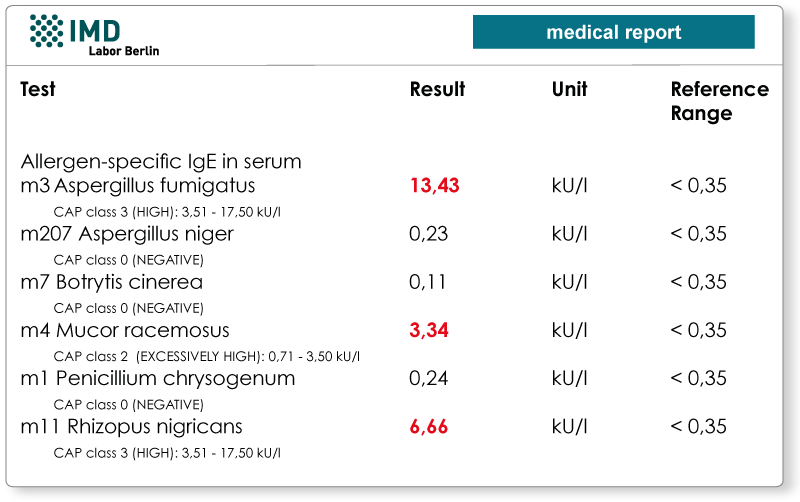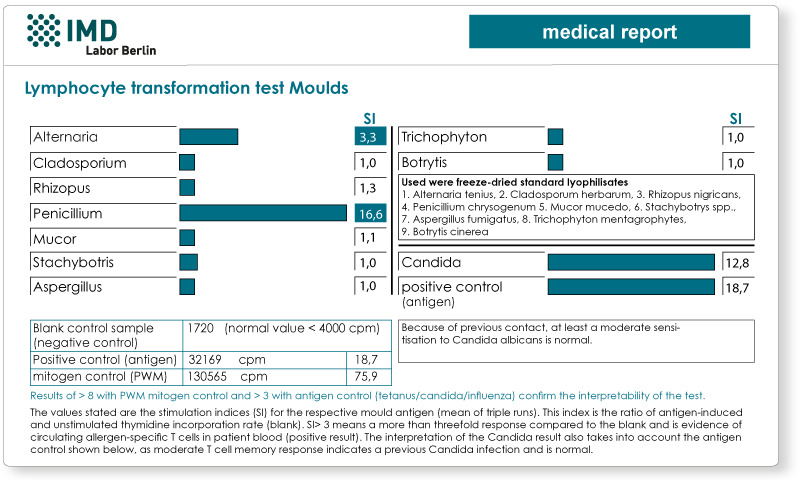An allergy to mould can feign a food allergy in rare cases.
If there is an existing allergy to mould, the consumption of food that contains mould can cause symptoms that feign a food allergy.
In the case of some foods, slight colonisation with fungi in the form of saprophytes occurs without this food appearing to be spoiled. The properties of the food substance play a role in this case (sugar content, consistency, content of natural fungicides), as well as the moisture content. Drying or dehydration of the food (by curing, for example) is an important form of preservation primarily for this reason. The risk actually increases for organic products due to the lack of fungicide treatment.
Foods frequently not recognised as containing mould spores:
- Bread (Penicillium spp ., Eurotium herbariorum)
- Apple, peach, and other stone/pip fruits (Penicillium spp.)
- Citrus fruit, orange juice (Penicillium spp.)
- Cheese (Penicillium spp. Scopulariopsis brevicaulis)
- Peanut, walnut, almond, pistachio (Aspergillus spp.)
- Dried fruit (Aspergillus spp.)
- Spices (Aspergillus spp.)
- Grape, strawberry (Botrytis cinerea, Rhizopus spp., Mucor spp.)
- Milk products (Geotrichum candidum)
- Fat, margarine (Cladosporium herbarum)
Depending on the clinical symptoms (immediate-type reaction or delayed symptoms), we can test for a sensitisation to mould by means of RAST (specific IgE for type 1 allergy) or LTT (specific T cells for type IV allergy).


Material:
Detection of specific IgE in serum (via CAP testing: 5 ml whole blood for serum extraction
Detection of cellular type IV sensitisation (LTT): 20 ml heparin blood + 5 ml whole blood for serum extraction
